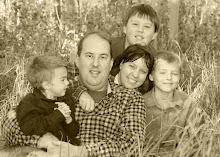William Pynchon, b. 11 Oct 1590, Essex, England
d. 29 Oct 1662, Wraysbury, England
William and Anna came to America in the Winthrop Fleet of 1630, and Anna died in about that same year. William was elected assistant and treasurer of the colony, and helped start a new settlement at Roxbury, MA. He married the widow Frances Samford in about 1632, the mother of his son-in-law Henry Smith. A couple of years later William and some other men decided to move westward to what is now known as Springfield, MA. At that time the area was under the jurisdiction of Connecticut."In … [1635], Mr. Pynchon, Henry Smith, Jehu Burr, and probably, some others, came to this place, called by the Indians Agawam, and began to build a house on the west side of the [Connecticut] river, on the Agawam, in the meadow, called from that fact House meadow. The Indians, seeing this, and being perfectly friendly, informed them that the house would be exposed to the flood, and they abandoned it, and came and built a house on the east side of the river… It is supposed they returned to Roxbury in the fall." These men purchased Aggawam from the Indians for "18 fathoms of wampum, 18 coats, 18 hatchets, 18 hoes, and 18 knives." In the spring of 1636 William and eight families: Matthew Mitchell, Henry Smith, Jehu Burr, William Blake, Edmund Wood, Thomas Ufford, and John Cable moved to Springfield. The settlement was founded to take advantage of fur-trading along the Connecticut River. William ran his town pretty much as he pleased and had a good relationship with the Indians.In 1650 William wrote a book about justification and redemption. The General Court of Massachusetts passed a resolution condemning the book and demanded William to retract his statements. It was said at the time that the title page itself was sufficient to prove heresy.(see below) The book was ordered burned. Supposedly only four copies escaped the flames, one of which is in the Connecticut Valley Historical Museum. In May of 1651, William appeared before the General Court to answer its charges.After meeting with three clergymen appointed by the Court, Pynchon retracted some, but not all, of his statements. He was sent back to Springfield in a 'hopeful way' to reconsider his views. He transferred all his lands and property in Springfield to his son, and sometime in 1652 he and Frances departed for England, as did his daughter Ann and Henry Smith There William continued to write religious tracts and pamphlets on the Jewish Synagogue, the Jewish Sabbath, and the Covenant with Adam.title page of The Meritorious Price of Our Redemption, etc. by William Pynchon, published in London in 1650.THE MERITORIOUS PRICE OFOur Redemption, Justification, &c.Cleering it from some common Errors;And proving,Part I.1. That Christ did not suffer for us those unutterable torments of Gods wrath, that commonly are called Hell-torments, to redeem our soules from them.2. That Christ did not bear our sins by Gods imputation, and therefore he did not bear the curse of the Law for them.Part II.3. That Christ hath redeemed us from the curse of the Law (not by suffering the said curse for us, but ) by a satisfactory price of attonement; viz. by paying or performing unto his Father that invaluable precious thing of his Mediatoriall obedience, whereof his Mediatoriall Sacrifice of attonement was the master-piece.4. A sinners righteousnesse or justification is explained, and cleered from some common Errors.By William Pinchin, Gentleman, in New-England.
ref: springfieldlibrary.org:"The Samuel Chapin Genealogy", pg. 260
Subscribe to:
Post Comments (Atom)

No comments:
Post a Comment